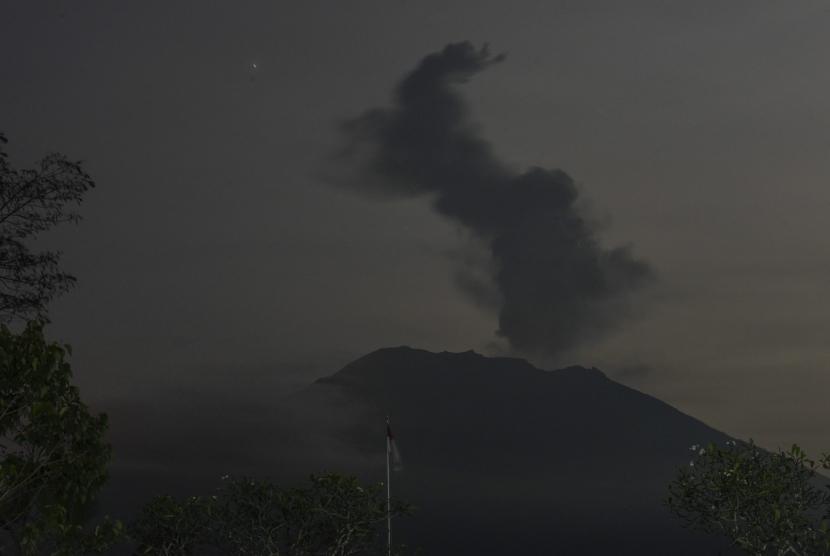REPUBLIKA.CO.ID, KARANGASEM -- The Energy and Mineral Resources Ministry's Volcanology and Geological Hazard Mitigation Center (PVMBG) reported here on Wednesday, Mount Agung has started to deflating.
The deflation occurred because the pressure inside the volcano's chamber has decreased, while the amount of magma in the crater has increased, the PVMBG head of volcano observation in eastern region, Devy Kamil Syahbana said in Karangasem district, Bali.
According to the satellite's records, some 20 million meter lava has filled the crater since Dec 2-3, Syahbana said at the Mount Agung Observation Post in Rendang village, Tuesday.
"Before deflating and entering the critical 'overscale' stage, the volcano has inflated because a large amount of molten particles were filling the (magma) chamber," Syahbani explained, while adding, the deflation was seen occurring in all parts of the volcano.
After the eruption in 1963, the lava was rapidly filling the crater. However now, following the second eruption, the lava has slowly flowed.
"In 1963, the crater was smaller than we have seen today. Hence, we will re-evaluate the acceleration (of the lava flow)," she remarked.
The evaluation will not only analyze the 1963 eruption, but also compare the volcano physical condition.
Also read: Tourism sector suffers Rp9 trillion losses
Since Monday to Tuesday, the volcano still spewed white and black smokes, as well as a large emission of gas which rose by 1,500 meters from the crater.
Meanwhile on Tuesday, the "low-frequency" tremor has occurred 10 times with 2-22 millimeter amplitude for 38-102 seconds.
The low frequency tremor was caused by the pressure of fluids and gas from the magma chamber to the crater.
"Mount Agung now is in its critical stage, and is prone to experiencing another eruption. Therefore, the volcano remains in the highest warning level IV," Syahbani emphasized.
The Volcano Center, according to its chief, would continue to observe the gas accumulation beneath the crater.
On Monday, the Volcano Center stated, the Suomi National Polar-Orbiting Partnership (Suomi NPP) satellite has recorded the sulphur dioxide (SO2) has filled the crater.
"Although the volcano is spewing the white smoke, the sulphur dioxide has marked that the volcanic activity is still occurring on Mount Agung," she explained.
In term of the lava flow, on Nov 30 there is a hike of the molten particle by 10 meter in the crater.
"In order to reach the edge (of the crater), at least the volcano needs to pump 120 meter lava from the chamber. However, the volcanic activity may stop, if the volcano's mobility is decreasing," she added.
Earlier on Monday, the red burnt lava were seen glowing at the crater. The Volcano Center estimated, the lava may be in 900 to 1,200 degree Celsius.
"The glow has marked the new lava flow has reached the crater. We will use this information as our guidance, and we call on the people to remain calm and alert," she reiterated.



